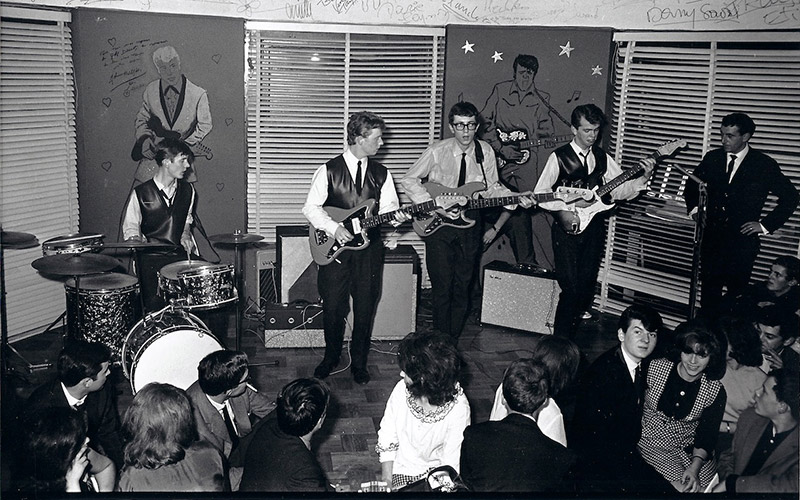
The Krewcats performing in France 1962. Photo Ted Tunnicliffe, courtesy Birmingham Music Archive. License: CC BY-SA 4.0, http://creativecommons.org/licenses/by-sa/4.0/
Creative cooperation in cultural heritage has various aspects and requirements. Based on the content of the toolkit, comprising sections on specific topics, results of workshops, case studies and other background research, some recommendations can be given.
The recommendations are grouped according to suggested activities for establishing Creative Cooperation, primary Concepts that should inform the work on cultural heritage products and services, considerations concerning Technology & Content, and Participation of citizens in the cooperation.
Creative Cooperation
Creative cooperation projects should consider: the required partnerships with organizations and businesses across sectors for achieving the project goals; the necessary knowledge and skills of the core team, and how to engage citizens, students and other stakeholders.
It is important to foster cross-fertilization and joint development of creative ideas, although the different stakeholders may have particular objectives (e.g., cultural, scientific, civic, economic or policy objectives).
Creative producers contribute their expertise in combining content and technology to reach, engage and inspire users. Though, the content providers (mostly of the heritage sector) and the knowledge of heritage subject-experts – curators, archivists, historians and others – are crucial as well.
A lot can be learned from other projects about what works and what does not. Learning does not mean copying, though what has proven to work might be adapted for the own specific purpose and context. More
Concepts
Among the primary concepts that should inform the work on cultural heritage products and services are: Communication of the heritage values (e.g. historical, social, symbolic or aesthetic); highlighting how they contribute to the distinct character of the region or town, and emphasizing the human side of heritage, social history and life (i.e. exemplary people, authentic voices and stories instead of just presenting objects and information).
“Think experiences”: Will the content and interaction engage and inspire people? Does it carry meaning and emotions? Will it allow for enriching and memorable experiences? Interactive storytelling will arguably be more engaging than a static presentational format. A game-like approach can also be appropriate, especially if children are among the intended user groups. For a cultural route or local walking trail a thematic approach might fit best.
The communication of cultural heritage should also help promote its sustainable use (e.g. in the context of tourism). More
Technology & Content
Technical applications offer new ways of communicating cultural heritage, but they are instrumental, the core role is with the cultural content and knowledge. Nevertheless it is important to use an appropriate technical platform that is based on mature technology.
Concerning the content, an authoritative, institutional perspective should be avoided. Rather it is crucial to make cultural heritage accessible and meaningful for all interested people. Social media provide a cost-effective way to “spread the word” as well as to receive contributions by users.
Offering content and worksheets to students and teachers for own history and heritage projects should be considered to bring available digital content in wider use. As digitization projects of heritage institutions are often publicly funded, it would be appropriate to release some content under an open content license. More
Participation
Recommendations on participation concern how to work with children, engage young people (e.g. students of arts & humanities centres, technical universities or business schools), and involve other interested citizens based on flexible schemes of participation.
Furthermore it is important to value local knowledge, for example, by involving local people in the communication of heritage – presenting their stories about particular objects, places or events rather than using stereotypic marketing messages. If it fits with the project focus, also links with local activities and products (e.g. events, creative culture programmes, and producers of local goods) should be established. More
